Welcome to the Fuligong Greenhouses
Source: InKunming | 2023-04-18 | Editor:Rachel
When it comes to Singapore Changi Airport, the forest and "waterfall" landscape of this airport is a beautiful and desirable indoor garden. Similarly, the Fuligong Greenhouses in Kunming Botanical Gardens have captured the essence of a dreamlike garden in 4,200 square meters of landscape, becoming a paradise for plant enthusiasts.
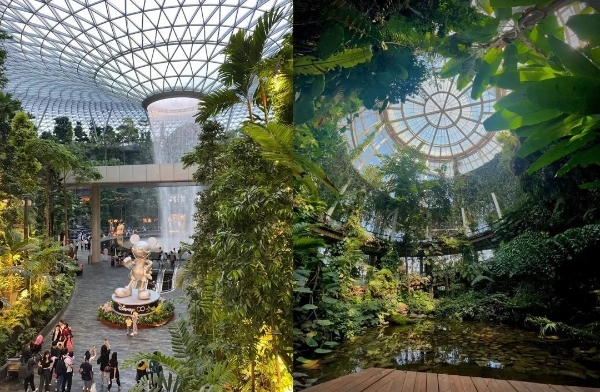
Singapore Changi Airport (left) and the Fuligong Greenhouses.
Located in Kunming Botanical Gardens, the Fuligong Greenhouses is the earliest greenhouses in the world with recorded history. It was built in the Imperial Garden during the reign of Emperor Wu of the Han Dynasty to cultivate exquisite fruits and rare flowers and trees from the south. It was named after this historical reference by the famous botanist, Wu Zhengyi.

Photo from Red.
The Fuligong Greenhouses now preserves more than 2,500 varieties of unique plants, covering an area of 4,200 square meters. It simulates various ecological environments such as tropical rainforests and deserts. The greenhouses are divided into different areas such as Tropical Aquatic Area, Tropical Fruit Area, Tropical Rainforest Area, and Tropical Desert Area. Its unique spiral structure represents the core of life, which fully displays the rich species diversity and unique ecological landscape of the "Plant Kingdom".
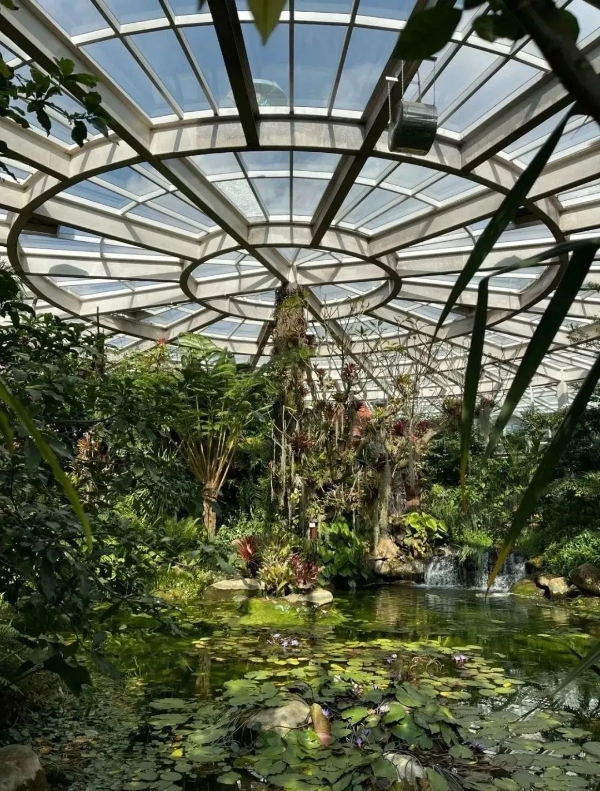
Photo from Red.
Walking into the Fuligong Greenhouses, the entire greenhouse consists of a winding and beautiful path, with waterfalls and mist, like being in a magical rainforest, crossing through tropical rainforests, desert plants, and deep valleys full of rare and beautiful orchids, making it a wonderland. Following the wooden corridor that symbolizes the core of life, the plants thrive in the 29.9-meter-high space, with waterfalls falling vertically from above and water lilies gently floating along the flow.
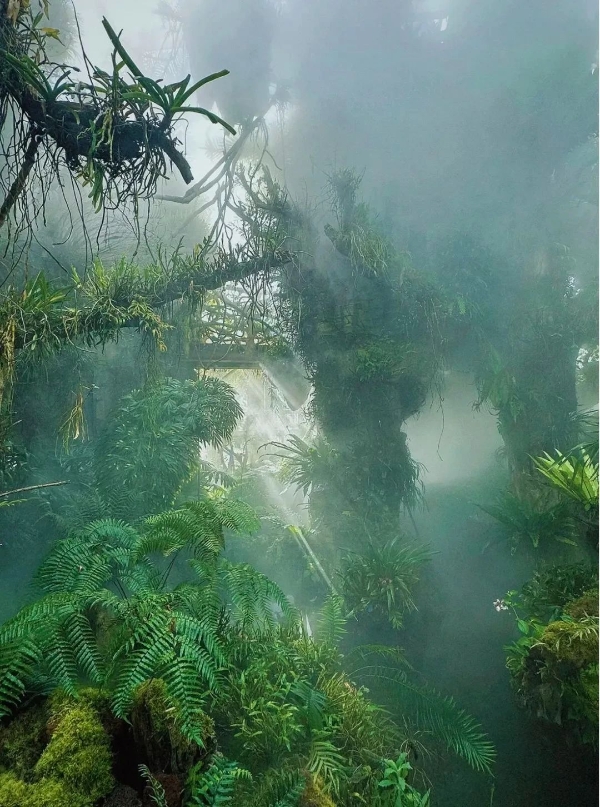
Photo from Red.
Here, visitors can see antiaris toxicaria, the king of poisonous trees; the horrifying strangler figs, and the pitcher plant that can devour mice... The Wangtian trees are tall and straight, and the cacti are huge. In the Fuligong Greenhouses, various unique plants from around the world gather here, giving people the "illusion" of crossing various regions.
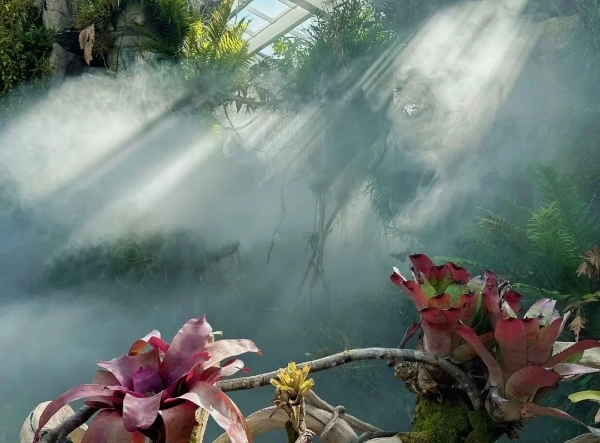
Photo from Red.
Air Plants (Tillandsia) from the American rainforest dance in the air. They don't need soil; they just lightly attach themselves to tree trunks and absorb water and nutrients from the air to live. The mysterious ruby-like fruit, known as the "taste bud magician", can make any sour fruits taste sweet within 2 hours. It can numb sour taste buds and excite sweet taste buds. This fruit is a national treasure that is prohibited from being exported from West Africa.
Carnivorous Plants Greenhouse
There are 680 classification units of carnivorous plants on display in the Carnivorous Plant Greenhouse, among which there are 378 native species. These include Nepenthes, Utricularia, Sarracenia, Drosera, Bromeliads, Heliamphora, Pinguicula, Dionaea, representing the most diverse collection of carnivorous plants in China.
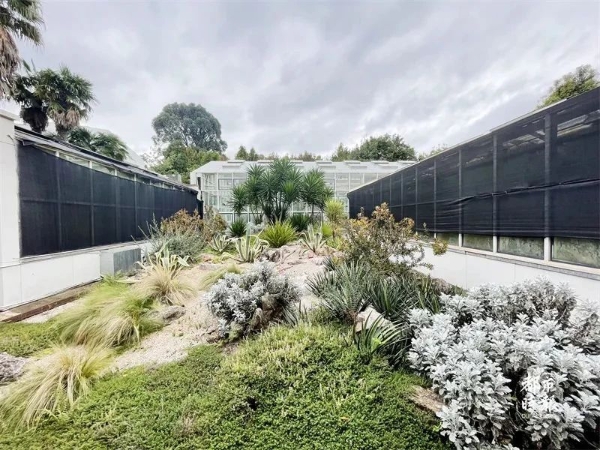
Carnivorous Plants Museum.
Orchid Pavilion
The Orchid Pavilion is the most refreshing and elegant greenhouse, consisting of a main hall and a subsidiary hall. By using horticultural elements such as rockery, streams, and corridors, it restores the natural growth environment and ecological community pattern of orchids. There are more than 600 species of terrestrial and epiphytic orchids, of which more than 400 species are epiphytic Dendrobium plants. In addition, rare orchids such as the warm-climate Calanthe orchid and the needle-leaf Dendrobium are also collected and conserved here.
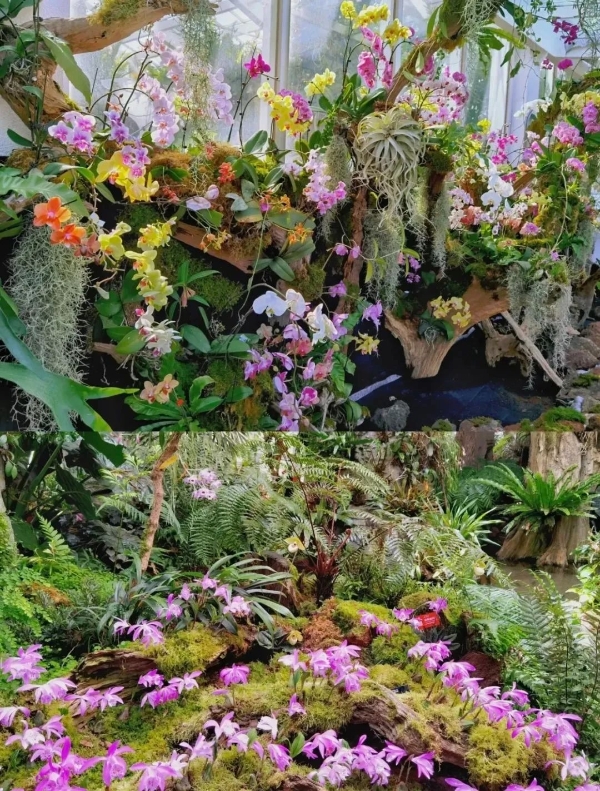
Photo from Red.
The pocket-shaped orchid, also known as the "fairy's footwear," comes in a variety of colors. When two orchids bloom side by side, it looks like fairies are stepping on the wind and floating in the air.
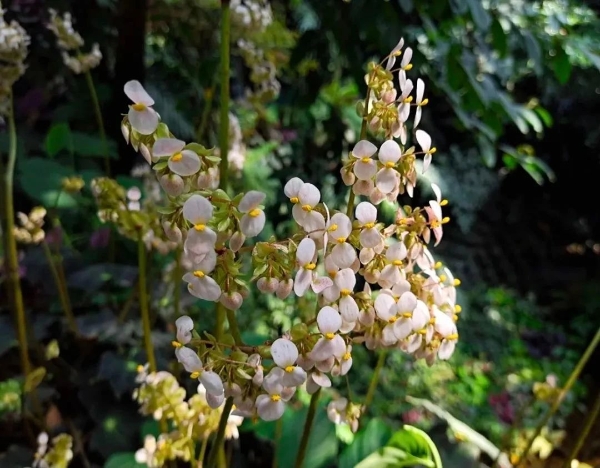
Photo from Red.
Cryptogamic Plants House
The Cryptogamic Plants House is the most low-key greenhouse in the Fuli Palace. Composed of a Fern Plant hall and a Moss Lichen hall, the house uses techniques such as rocks, ancient trees, small bridges and streams to simulate the primitive and ancient ecological environment of cryptogamic plants. In the Fern Plant Museum, over 130 species of fern plants including Polystichum aculeatum are preserved. In the Moss Lichen House, over 60 species of moss and lichen plants including sphagnum moss are collected.

Photo from Red.
Caomu Baijian Museum
The most commemorative science museum in the Fuligong Greenhouses is the "internet celebrity" Seed Museum. The museum is named "Caomu Baijian" to commemorate the famous Chinese botanist Wu Zhengyi, also known as "Bai Jian", and the name reflects the diversity of plants. Caomu Baijian Museum is an important science popularization venue within the research institute, including a seed museum, science experience area, and science classroom, etc.
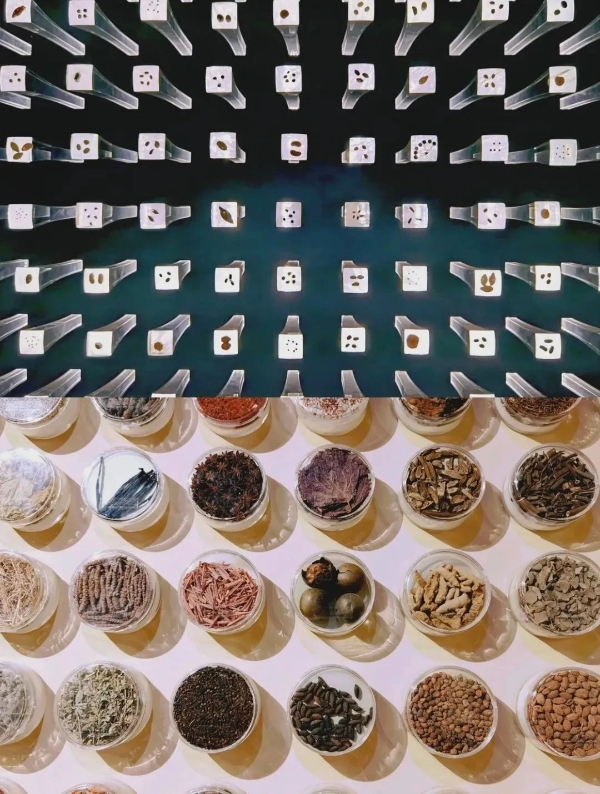
Photo from Red.
Seed Museum
At the intersection of the end and beginning of life, a wall of seeds in 2,040 acrylic cylinders and bottles of seeds of thousands of types of food, spices, beverages and plant seeds hanging in the air attract worldwide attention.
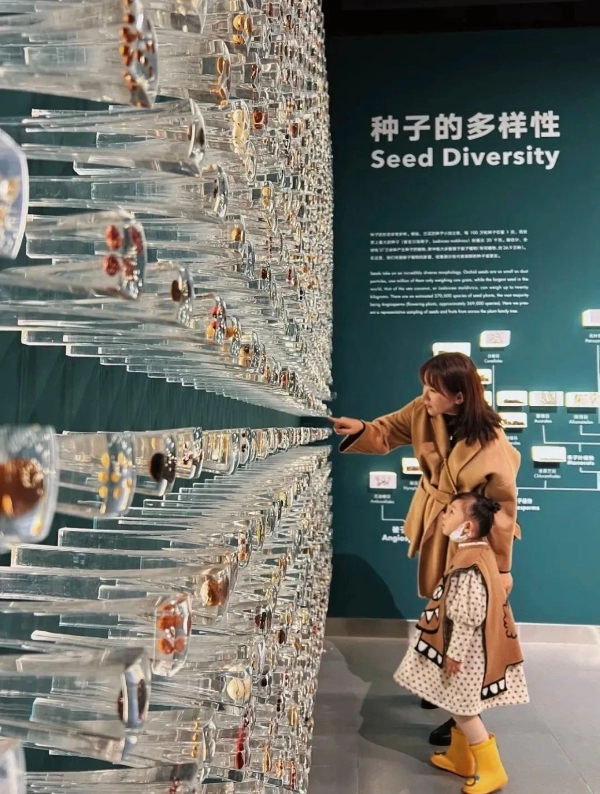
Photo from Red.
Cai Jie, director of the Southwest China Wild Germplasm Resources Preservation Center, said, "One of the wonders of plant seeds is that although they belong to the same species, their appearance can show great differences, which wonderfully demonstrate the diversity of life." The conservation of plant genetic resources, especially wild plant genetic resources, is therefore particularly important. Cai Jie said, "A seed is not only the end of life but also the beginning of life. Seeds represent the hope of life, and compared to the plants themselves, the preservation of seeds is easier, as long as they are stored under relatively suitable temperature and humidity conditions, seeds can be stored for a long time."
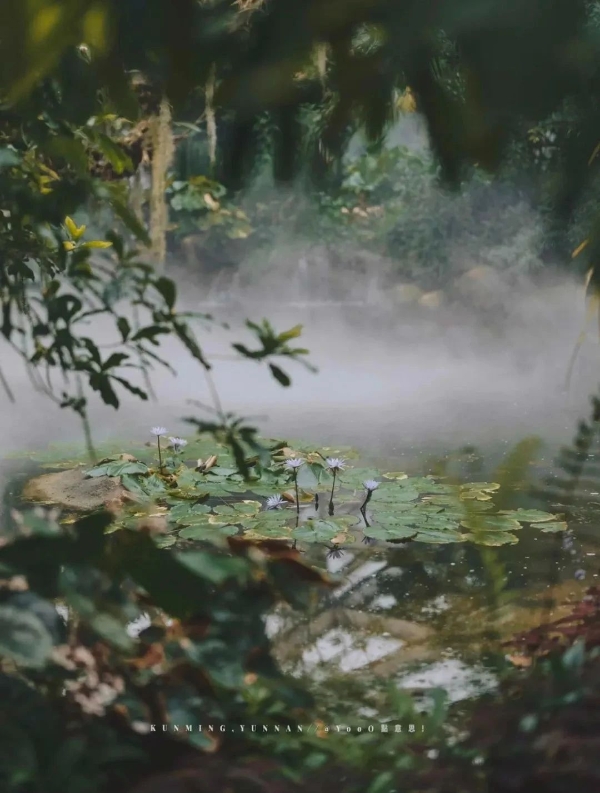
Photo from Red.
Every plant in the Fuligong Greenhouses is labeled with a name tag, which is either red or black. Red represents priority protected and rare plants, while black represents other plants. Scanning the QR code on the name tag allows visitors to see the protection level, usage and other information of the plant.
The sunlight shines through the mist of the Fuligong Greenhouses, and Kunming, the southwestern frontier city, has stepped onto the world stage due to its rich biodiversity.
Click here to view the Chinese report
(Editors: Amy, Rachel)







